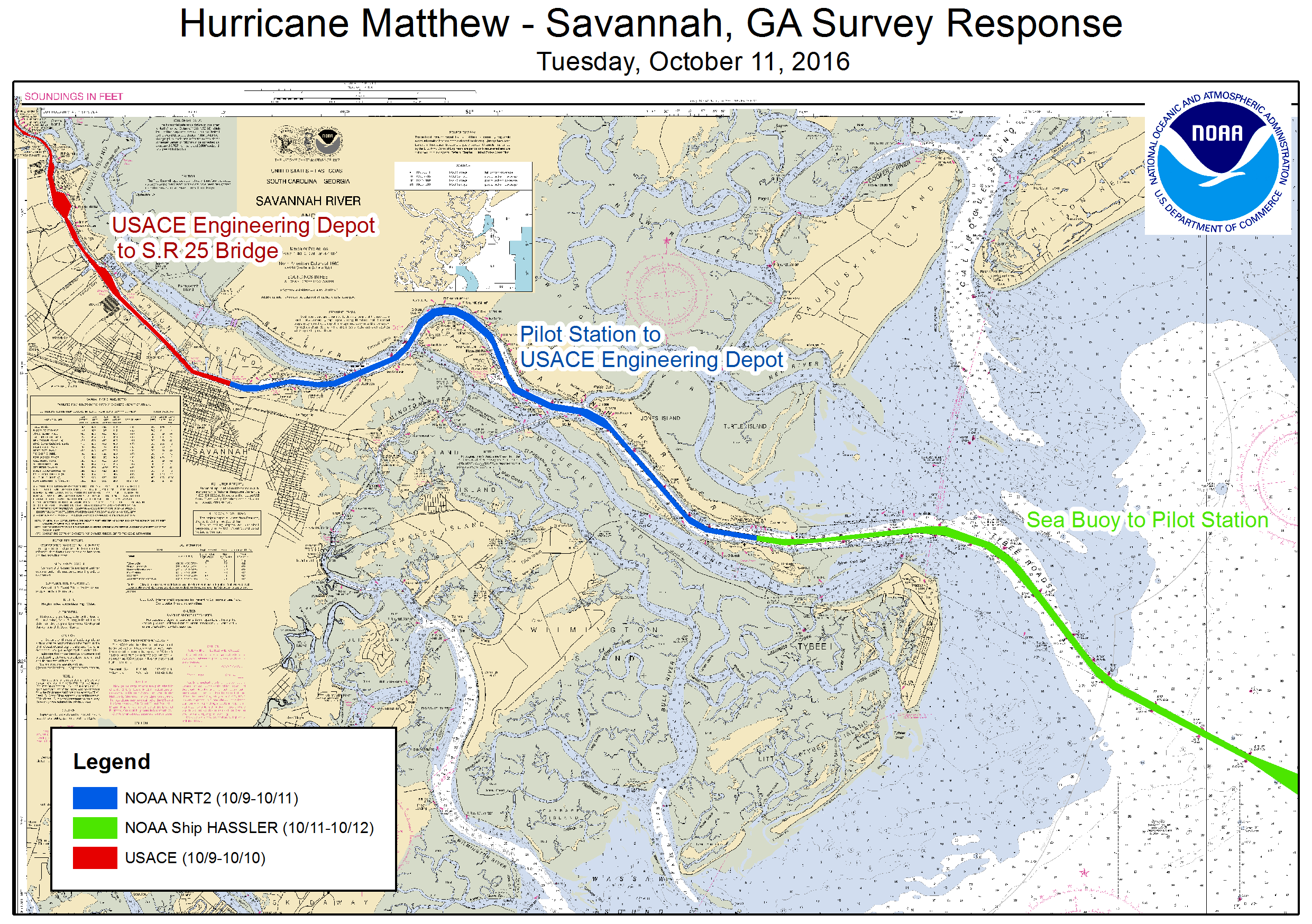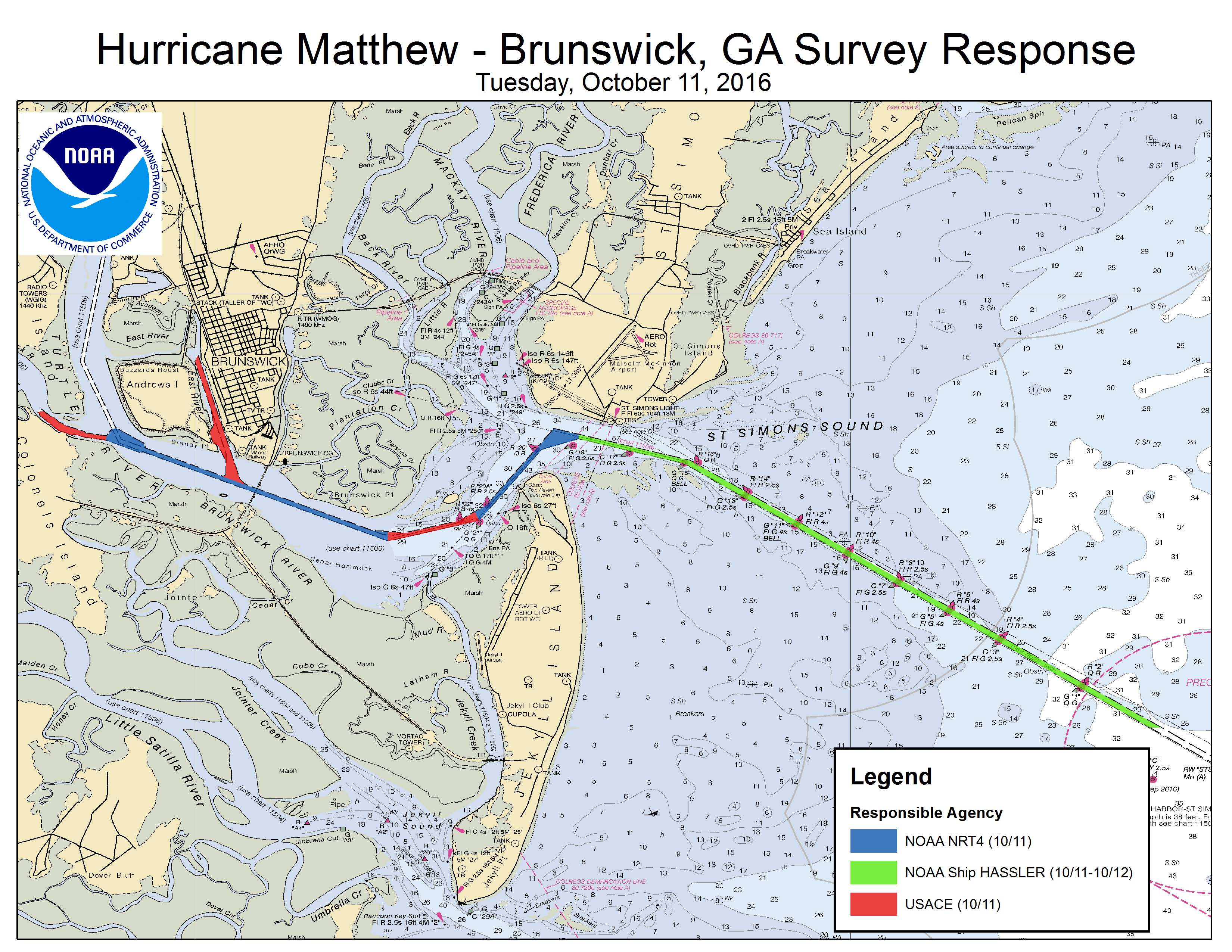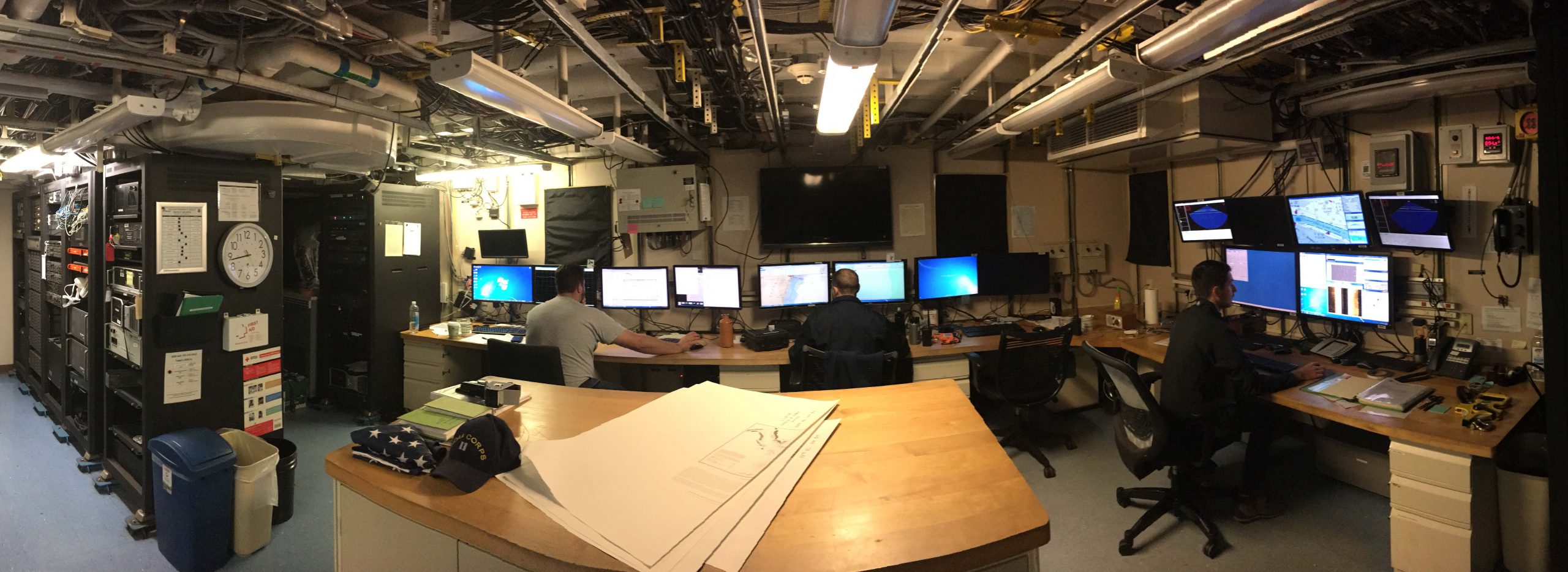Matthew became a hurricane on Thursday, September 29, and it was soon clear that NOAA’s navigation services would be called into action. Coast Survey knew they would be needed for the maritime transportation system’s rapid recovery operations, to search for underwater debris and shoaling. That Saturday, while Hurricane Matthew was still three days away from hitting Haiti, Coast Survey was already ramping up preparations for assisting with reopening U.S. shipping lanes and ports after Matthew’s destruction. By Monday, as NOAA’s National Hurricane Center zeroed in on a major hit to the southeast coast, Coast Survey’s navigation service personnel began moving personnel and survey vessels for rapid deployment. Calling in survey professionals from as far away as Seattle, teams were mobilized to locations outside of the hurricane’s impact zones, so they would be ready to move in and hit the water as soon as weather and ocean conditions allowed.

Coast Survey prepared two navigation response teams – small vessels with 3-person crews – and NOAA Ship Ferdinand R. Hassler for survey work prioritized by the U.S. Coast Guard, in coordination with the U.S. Army Corps of Engineers, ports, terminal operators, state officials, and local emergency responders. Two navigation managers, Kyle Ward (Southeast) and Tim Osborn (Central Gulf of Mexico), were augmented by Lucy Hick and Michael Davidson, navigation services personnel in Silver Spring, Maryland, to coordinate personnel safety, property protection, and navigation service delivery before, during, and after the storm.


Port Canaveral, Florida
Tim Osborn, who deployed to Port Canaveral from Baton Rouge, is a veteran of NOAA’s many hurricane responses in the Gulf of Mexico ports. Osborn lent his expertise and experience to the Port Canaveral pilots, port officials, and U.S. Coast Guard, as they quickly resumed operations. While the port re-opened on October 8 for cruise ships during daylight hours, they needed a Coast Survey navigation team, working in coordination with a private survey company contracted by the port, to search for dangers to navigation for the deeper draft vessels. Navigation Response Team 4 (Dan Jacobs, Mark McMann, and Starla Robinson) worked through the day on October 9, and the port was subsequently opened for full operations.
Port of Charleston, South Carolina
As luck would have it, NOAA Ship Ferdinand R. Hassler, commanded by Lt. Cmdr. Matthew Jaskoski, was surveying the approaches to Wilmington, North Carolina, this fall. They broke off survey operations and headed to Charleston as Hurricane Matthew approached, so they were in position to assist with reopening that port. Knowing they would need additional technical help for around-the-clock operations, physical scientist James Miller drove from his NOAA office in Norfolk to Charleston (the normally six-hour trip taking over 14 hours, due to flooded roads) to augment Hassler‘s normal complement of scientists. As soon as conditions were safe, on October 9, Hassler went to work. From 9:30 a.m. to 5:00 p.m., Hassler surveyed 50 nautical miles. They processed their data, checking it for dangers to navigation, and got their report to the U.S. Coast Guard by 6:40 that evening. Armed with Hassler’s report, along with data from the Army Corps of Engineers, the U.S. Coast Guard was able to reopen the port with restrictions by about 7:00 p.m.

Port of Savannah, Georgia
Ferdinand R. Hassler’s next assignment was to assist with survey operations at the Port of Savannah. After waiting for safe transit conditions in departing Charleston, they arrived in Savannah in the late afternoon of October 11, joining Coast Survey’s Navigation Response Team 2 (James Kirkpatrick, Lucas Blass, and Ian Colvert), who had been surveying there since October 9. The U.S. Army Corp of Engineers (USACE) also surveyed, as shown below. With offshore conditions too choppy for small boat survey operations, Hassler went to work surveying Savannah’s entrance channel, planning to survey for about ten hours into the night. They hope to deliver their report to the Coast Guard before daylight on October 12.
UPDATE (10/13/2016): Hassler finished the Savannah survey at about 9:30 p.m. on Oct. 11, and started transiting to their next assignment ten minutes later. The ship’s physical scientists continued working on the Savannah data, and were able to deliver their report to the Coast Guard at about 11:45 p.m.

Port of Brunswick, Georgia
Next, Hassler will join with Navigation Response Team 4 for surveying at the Port of Brunswick, to work with the Georgia Port Authority, the U.S. Coast Guard, the harbor pilots and the USACE to reopen the port to commercial vessel traffic. NRT4 completed inshore survey operations on October 11, and Hassler will survey the offshore area on October 12.
UPDATE (10/13/2016): Hassler arrived at Brunswick at about 3:00 a.m. on October 12, but the sea was too rough for surveying the approach and entrance channel. Ultimately, conditions did not improve during the day, and Hassler had to demobilize and return to Charleston.





One Reply to “NOAA helps four ports recover from Hurricane Matthew”